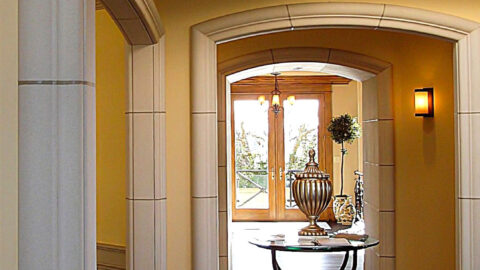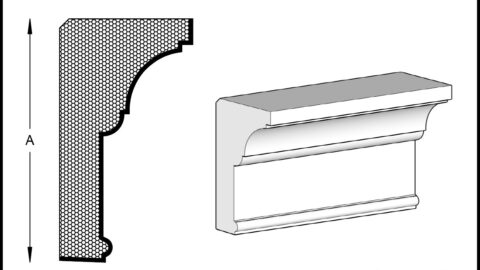Palladian architecture is a type of architectural style inspired by the works of renowned Italian architect Andrea Palladio. It is a popular form or architecture still used today, and we’ve found that a surprising number of people have used our products for creating some of these architectural designs.
Palladian architecture is known for its timeless elegance, classical proportions, and harmonious design principles continue to influence architectural styles even today. Below, we delve into the distinctive elements of Palladian architecture, what sets it apart from other forms of architecture, and what people should know about this enduring architectural style.
History of Palladian Architecture
Palladian architecture emerged during the Renaissance period in Italy and gained popularity throughout Europe. It was rooted in the revival of classical Roman architecture and embraced the principles of balance, harmony, and proportion. Palladio’s designs were characterized by simple forms, classical elements, and a deep appreciation for the integration of architecture with the natural environment.
Key elements of Palladian Architecture include:
- Classical Proportions – Palladian architecture places great emphasis on classical proportions, symmetry, and balance. It follows a strict adherence to mathematical ratios and harmonious relationships between elements, creating a sense of visual equilibrium.
- Façade Design – Palladian buildings often feature grand, imposing façades. Elements such as pediments and porticos, supported by columns or pilasters, are commonly used to create a sense of grandeur and provide a dignified entrance to the structure. Arches and arcades are also employed, adding depth and visual interest to the building’s exterior.
- Window and Door Treatments – Palladian architecture pays meticulous attention to the design of windows and doors. Door surrounds are often adorned with decorative details, while window surrounds feature pilasters, entablatures, and pediments. These treatments add elegance and emphasize the importance of these architectural features.
There is more to Palladian Architecture than just these elements, but these are perhaps some of the best known components to this style of architectural design.
Palladian Architecture in Contrast to Other Styles
Palladian architecture stands in contrast to other architectural styles, showcasing its unique characteristics and influences. For example:
- Classical vs. Gothic – While Gothic architecture emphasizes verticality and intricate detailing, Palladian architecture focuses on simplicity, clean lines, and classical forms.
- Palladian vs. Baroque – Palladian architecture is known for its restrained elegance, while Baroque architecture is characterized by dramatic embellishments, exuberant decorations, and dynamic forms.
- Palladian vs. Modernism – Palladian architecture finds inspiration in classical ideals and historical references, while modernism embraces simplicity, functionalism, and the innovative use of materials.
Of course, there are dozens of different styles of architecture, but these are some of the ways that Palladian compares to other common forms of architecture.
Key Characteristics of Palladian Architecture
Palladian architecture is renowned for several key characteristics that contribute to its enduring appeal:
- Simplicity and Clarity of Form – Palladian buildings exhibit a sense of simplicity and clarity, showcasing the beauty of well-proportioned forms and balanced composition.
- Integration of Nature and Surroundings – Palladio believed in harmoniously integrating buildings with their natural surroundings, often incorporating expansive windows and open spaces to connect the interior with the outside world.
- Emphasis on Light and Space – Palladian architecture embraces the use of light and space to create a sense of openness and tranquility, enhancing the overall experience within the building.
- Timeless Appeal and Long-Lasting Influence – Palladian architecture’s timeless elegance and enduring influence can be seen in countless buildings around the world, spanning centuries of architectural development.
Palladian Architecture is beautiful, and while – like most forms of architecture – it is not going to be right for everyone, but those that appreciate it can see some real beautiful in the design.
Notable Examples of Palladian Architecture
- Villa Rotonda (Villa Almerico-Capra) in Vicenza, Italy
- The White House in Washington, D.C., United States
- Chiswick House in London, United Kingdom
- The Prado Museum in Madrid, Spain
Appreciating Palladian Architecture Today
Palladian architecture stands as a testament to the enduring power of classical design principles and aesthetic beauty. Its harmonious proportions, elegant façades, and meticulous attention to detail have captivated architects and enthusiasts for centuries. By understanding the key elements, distinctive features, and historical significance of Palladian architecture, we can appreciate its impact on the built environment and draw inspiration from its timeless elegance to shape the architecture of today and tomorrow.






Recent Comments